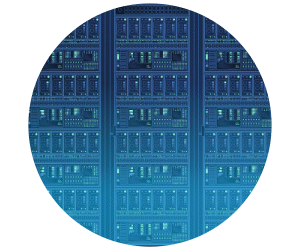No One Likes Overheated Devices
According to McKinsey, cooling now accounts for 40% of a data center’s energy consumption. In high-performance scenarios, the density of a single rack of servers can range from 20 to 30 kilowatts. Add this up over thousands of racks and hundreds of rows, and the result is a meltdown waiting to happen.
Overheated devices can cause several problems. In a best-case scenario, hot devices temporarily shut down, causing downtime but minimal damage. Slightly worse is to have steaming-hot servers that are dependencies for other processes and can take out multiple services. At the most destructive end of the spectrum, soaring data center temperatures can lead to permanent device damage or data center fires.
Even without AI in the picture, maintaining appropriate facility temperatures has always been an expensive endeavor. Jurisdictions that have set sustainability goals are now hard-pressed to honor those ambitions while ensuring they adequately cool their facilities.
LEARN MORE: State and local governments benefit from data center sustainability.
High-Density Data Center Cooling Techniques
Comprehensive cooling is the only solution to combat rising data center temperatures. The three broad cooling options that have the most potential to offset high-density workloads are:
- Liquid cooling loops. With direct liquid cooling solutions, cold plates are mounted on the hottest data center components, such as GPUs or CPUs, and cold water is sent to these plates. The water absorbs heat and is sent to a heat exchange, which dissipates the heat. Once cooled, the water is sent back to warm components, creating a closed cooling loop.
- Passive cooling. Agencies in colder climates, such as in northern states, can rely partly on passive data center cooling systems during certain times of the year to help lower ambient temperatures. This is not necessarily a stand-alone solution, but it can work well in tandem with other methods, such as direct liquid cooling, to reduce net energy costs.
- Immersion cooling. This approach involves immersing high-performance devices entirely in water to reduce their overall temperature. While effective, this method is also costly and is unrealistic for many state agencies.
DIVE DEEPER: Modernizing data centers will prepare agencies for AI’s next phase.
There are a range of other options available that can be mixed and matched depending on a facility’s requirements. It’s often easiest to work with a partner that has access to a variety of solutions and can draft and deploy comprehensive power and cooling plans. Among the benefits of tactical temperature management:
- Increased resiliency. Plans can help identify potential disruptions and prevent damaging downtime.
- Improved visibility and use. Cooling management systems can pinpoint opportunities for power or device optimization.
- Reduced costs. Maximized cooling efficiency helps reduce the overall cost of data center cooling.
- Maximized infrastructure flexibility. Well-designed power and cooling systems are modular, allowing companies to scale as data center needs change.
Data centers are getting hotter, and in many jurisdictions, simply sacrificing performance for reduced power consumption isn’t a viable option. But evaluating power and cooling plans that balance price, performance and risk might be.











